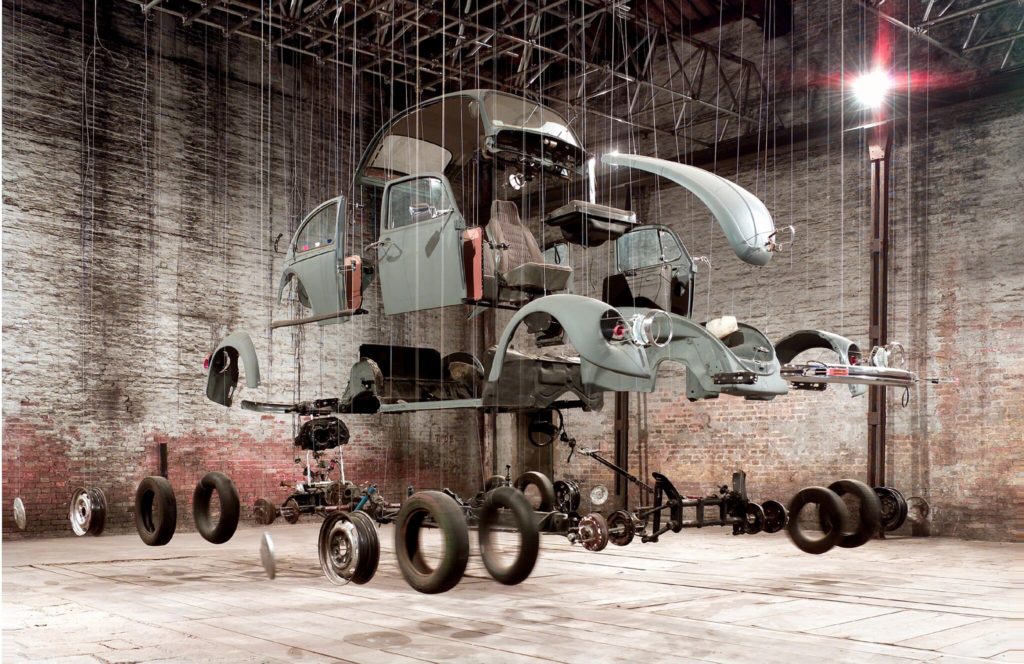
Desparafusando o grande Leviatã (Callon e Latour 1981)
CALLON, Michel; LATOUR, Bruno. 1981. Unscrewing the big Leviathan: how actors macro-structure reality and how sociologists help them to do so. In: K. Knorr-Cetina; A.V. Cicourel (eds.). Advances in social theory and methodology: toward and integration of micro- and macro-Sociologies. Boston: Routledge; Kegan Paul, pp.277-303.
HOBBES’S PARADOX:
For Hobbes – and for us too – it is not a question of classifying macro- and micro-actors, or reconciling what we know of the former and what we know of the latter, but posing anew the old question: how does a micro-actor become a macro-actor? How can men act ‘like one man’? (Callon; Latour 1981:279)
TRANSLATION:
By translation we understand all the negotiations, intrigues, calculations, acts of persuasion and violence, thanks to which an actor or force takes on, causes to be conferred on itself, authority to speak or act on behalf of another actor or force […]. Whenever an actor speaks of ‘us‘ (Callon; Latour 1981:279)
SEMIOTIC DEFINITION OF ACTOR:
By the term ‘actor’ we mean, from now on, the semiotic definition by A. Greimas […]: ‘whatever unit of discourse is invested of a role’, like the notion of force, it is no way limited to ‘human’. (Callon; Latour 1981:301 nota 8 )
DELEUZE & GUATTARI (anti-étipo como “crítica devastadora da psicanálise”):
The unconscious, anyway, is not ‘individual’, so that in our innermost dreams we still act inside the whole body politic and vice versa. (Callon; Latour 1981:302 nota 9)
ACTORS as NETWORKS:
Two networks may have the same shape although one is almost limited to a point and the other extends all over the country (Callon; Latour 1981:280)
O ERRO DE DURKHEIM:
By changing the framework of analysis while this is under way they confirm the power relations, giving aid to the winner and giving the losers the ‘vae victis’. (Callon; Latour 1981:280)
(2) BABOONS, OR THE IMPOSSIBLE LEVIATHAN:
[T]he impossible Monkey-Leviathan, or the difficulty of building up macro-actors in a herd of baboons living in the wild. (Callon; Latour 1981:281)
EVOLUTION OF PRIMATOLOGY (from state of nature to state of society in 30 years)
Over 30 years, the study of primates has thus been used as a projective test: first, bestial chaos was observed, then a rigid, almost totalitarian system. Baboons have been obliged to restructure the Leviathan and to move from the war of all against all to absolute obedience. (Callon; Latour 1981:282)
PRIMATOLOGIA (Krummer e Haraway):
(Callon; Latour 1981:302 notas 17-9)
NOT CHAOS x ORDER, BUT DEGREES of ORGANIZATION:
The baboons do indeed have organization: not everything is equally possible in it. One animal does not go close to just any other; an animal does not cover or groom another by chance; nor does it move aside just at random; animals cannot go just where they wish. However, this organization is never rigid enough to constitute an integrated system. […] There is no chaos, but no rigid system either. (Callon; Latour 1981:282)
SOCIAL SKILLS & SOCIAL COMPLEXITY:
A baboon’s life is not easy in the new society that has been forged for it and is no less difficult than our life as revealed by ethnomethodological works. He must constantly determine who is who, who is superior and who inferior, who leads the group and who follows, and who must stand back to let him pass. […] Each time it is necessary, as the ethnomethodologists say, to repair indexicality. Who is calling? What is it intending to say? […] Only the context will tell, but simplifying and evaluating the context is a constant headache. (Callon; Latour 1981:282-3)
SOCIAL=FOLLOW (Tarde):
Baboons are social […] in the sense that they follow each other, enrol each other, form alliances, share certain links and territories. But they are social [and not, for instance, ‘technical’], too, in that they can maintain and fortify their alliances, links and partitions only with the tools and procedures that ethnomethodologists grant us to repair indexicality. They are constantly stabilizing the links between bodies by acting on other bodies. (Callon; Latour 1981:283)
A DURAÇÃO DA ASSOCIAÇÃO DEPENDE DA DURABILIDADE DA SUA MEDIAÇÃO:
Although in order to stabilize society everyone – monkey as well as men – need to bring into play associations that last longer than the interactions that formed them, the strategies and resources may vary between societies of baboons or of men. (Callon; Latour 1981:283)
LEVIATHAN COMO CONCRETIZAÇÃO DE ASSOCIAÇÕES:
[I]f you transform the state of nature, replacing unsettled alliances as much as you can with walls and written contracts, the ranks with uniforms and tatoos and reversible friendships with names and signs, then you will obtain a Leviathan. […] [W]hat makes the sovereign formidable and the contract solemn are the palace from which he speaks, the well-equipped armies that surround him, the scribes and the recording equipment that serve him. The ethnomethodologists forget to include in their analyses the fact that ambiguity of context in human societies is partially removed by a whole gamut of tools, regulations, walls and objects of which they analyse only a part. (Callon; Latour 1981:284)
CRÍTICAS a LEWIS MUMFORD e A. LEROI-GOURHAN:
(Callon; Latour 1981:303 nota 22)
REASSEMBLING THE SOCIAL (aqui os materiais parecem não agir…):
Instead of dividing the subject with the social/technical, or with the human/animal, or with the micro/macro dichotomies, we will only retain for the analysis gradients of resistivity and consider only the variations in relative solidity and durability of different sorts of materials. […] By associating materials of different durability, a set of practices is placed in a hierarchy in such a way that some become stable and need no longer be considered. Only thus can one ‘grow‘. (Callon; Latour 1981:284)
BLACK BOX METAPHYSICS (social, technical, logical):
An actor grows with the number of relations he or she can put, as we say, in black boxes. A black box contains that which no longer needs to be reconsidered, those things whose contents have become a matter of indifference. The more elements one can place in black boxes – modes of thoughts, habits, forces and objects [fatos sociais?] – the broader the construction one can raise. Of course, black boxes never remain fully closed or properly fastened […] but macro-actors can do as if they were closed and dark. Although, as ethnomethodologists have shown, we are all constantly struggling for closing leaky black boxes, macro-actors, to say the least, do not have to negotiate with equal intensity everything. They can go on and count on a force while negotiating for another. If they were not successful at that, they could not simplify the social world. In mechanical terms, they could not make a machine, that is hide the continued exercise of a will to give the impression of forces that move by themselves. In logical terms, they could not make chains of arguments, that is stabilize discussion of certain premises to allow deductions or establish order between differente elements. (Callon; Latour 1981:284-5)
CREATING ASYMMETRIES-IRREVERSIBILITIES (black boxes, chreods):
In the first moments of fertilization, all cells are alike. But soon an epigenetic landscape takes form where courses are cut out which tend to be irreversible; these are called ‘chreods’. Then cellular differentiation begins. Whether we speak of black boxes or chreods, we are dealing with the creation of asymmetries. (Callon; Latour 1981:285)
PROCESSOS DE ASSOCIAÇÃO:
How can we examine macro-actors and micro-actors, we were wondering, without confirming differences in size? Reply: by directing our attention not to the social but towards the processes by which an actor creates lasting asymmetries. That among these processes some lead to associations which are sometimes called ‘social’ (associations of bodies), and that some of the others are sometimes called ‘technical’ (associations of materials), need not concern us further. Only the differences between what can be put in black boxes and what remain open for future negotiations are now relevant for us. [ou seja, essa diferença é uma caixa preta que Latour quer que aceitemos agora sem questionar] (Callon; Latour 1981:286)
DEFINITION OF ACTOR:
What is an ‘actor’? Any element which bends space around itself, makes other elements dependent upon itself and translates their will into a language olf its own. (Callon; Latour 1981:286)
GROWING ACTOR:
Weak, reversible interactions, are replaced by strong interactions. Before, the elements dominated by the actor could escape in any direction, but now this is no longer possible. Instead of swarms of possibilities, we find lines of force, obligatory passing points, directions and deductions. (Callon; Latour 1981:287)
TERATOLOGY (Renault X EDF):
So far we have not said whether for EDF this is a question of something dreamed up by engineers, or a reality. In fact no one can make this distinction a priori, for it is the very basis of the struggle between the actors. (Callon; Latour 1981:289)
ASSOCIOLOGY:
The actors can bond together in a block comprising millions of individuals, they can enter alliances with iron, with grains of sand, neurons, words, opinions and affects. All this is of little importance, providing they can be followed with the same freedom as they themselves practise. We cannot analyse the Leviathan if we give precedence to a certain type of association, for example associations of men with men, iron with iron, neurons with neurons, or a specific size of factors. Sociology is only lively and productive when it examines all associations with at least the same daring as the actors who make them. (Callon; Latour 1981:292)
METHODOLOGY (follow the actor’s associations but don’t be associated; differential perspective):
What concept will enable us to follow the actors in all their associations and dissociations and to explain their victories and defeats, though without our admitting belief in the necessities of every kind which they claim? […] What do we mean by ‘associate’? […] Two actors can only be made indissociable if they are one. For this their wills must become equivalent. He or she who holds the equivalences holds the secret of power. Through the interplay of equivalences, hitherto scattered elements can be incorporated into a whole, and thus help to stabilize other elements. (Callon; Latour 1981:292-3)
THE LEVIATHAN as an EPIGENETIC LANDSCAPE:
Steel plates, palaces, rituals and hardened habits float on the surface of a viscous-like gelatinous mass which functions at the same tiime like the mechanism of a machine, the exchanges in a market and the clattering of a teleprinter. Sometimes whole elements from factory or technical systems are redissolved and dismembered by forces never previously seen in action. These forces then in turn produce a rough outline of a chimera that others immediately hasten to dismember. (Callon; Latour 1981:294)
O DESENCANTAMENTO DO MUNDO como o ENCANTAMENTO DA TECNOLOGIA (Weber):
If Weber and his intellectual descendants found that this monster [Leviathan] was becoming ‘disenchanted’, this was because they allowed themselves to be intimidated by techniques and macro-actors. (Callon; Latour 1981:296)
HOW DOES AN ACTOR GROW:
In order to grow we must enrol other wills by translating what they want and by reifying this translation in such a way that none of them can desire anything else any longer. (Callon; Latour 1981:296)
What makes them grow or shrink? The other actors whose interests, desires and forces they translate more or less successfully, and with whom they ally or quarrel. (Callon; Latour 1981:296)
SOCIOLOGIST as ACTOR:
Self-designated and self-appointed, spokesmen of the people, they have, for more than a century now, taken over from Hobbes’s sovereign (Callon; Latour 1981:297)
Each time they construct a unity, define a group, attribute an identity, a will or a project; each time they explain what is happening, the sociologist, sovereign and author – as Hobbes used the term – add to the struggling Leviathans new identities, definitions and wills which enable other authors to grow or shrink, hide away or reveal themselves, expand or contract. (Callon; Latour 1981:298)
Sociologists are neither better nor worse than any other actors. Neither are they more external nor more internal, more nor less scientific. Common, too common. (Callon; Latour 1981:299)
We [sociologists] too work on the Leviathan, we too aim to sell our concepts, we too seek allies and associates and decide who it is we want to please or displease. (Callon; Latour 1981:300)
THE FIRST MISTAKE (micro-actors are not simpler than macro-actors, and this is good for the sociologist):
A macro-actor can only grow if it simplifies itself. As it simplifies its existence, it simplifies the work of the sociologist. (Callon; Latour 1981:299)
THE SECOND MISTAKE (micro-interactions are not more real than abstract macro-structures):
In a world already structured by macro-actors, nothing could be poorer and more abstract than individual social interaction. (Callon; Latour 1981:300)
A SOCIOLOGIST STUDIES PROCESSES OF ASSOCIATION-DISSOCIATION:
What then is a sociologist? Someone who studies associations and dissociations, that is all, as the word ‘social’ itself implies. Associations between men? Not solely, since for a long time now associations between men have been expanded and extended through other allies: words, rituals, iron, wood, seeds and rain. The sociologist studies all associations, but in particular the transformation of weak interactinos into strong ones and vice versa. This is of special interest because here the relative dimensions of the actors are altered. (Callon; Latour 1981:300)
O QUE DEFINE A SOCIOLOGIA NÃO É UM CONHECIMENTO PRÉVIO DO SOCIAL, MAS SIM UMA PERSPECTIVA DIANTE DOS PROCESSOS DE ASSOCIAÇÃO:
For the sociologist then the question of method boils down to knowing where to place oneself. Like Hobbes himself, he or she sits just at the point where the contract is made, just where forces are translated, and the difference between the technical and the social is fought out, just where the irreversible becomes reversible and where the chreods reverse their slopes. […] The sociologists – teratologists – are in the warm, light places, the places where black boxes open up, where the irreversible is reversed and techniques return to life; the places that give birth to uncertainty as to what is large and what is small, what is social and what technical. (Callon; Latour 1981:300-1)

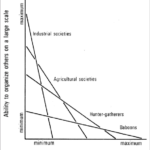
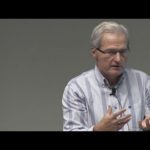
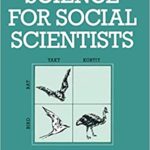
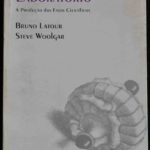
 LaSPA is located at the Institute of Philosophy and Human Sciences (
LaSPA is located at the Institute of Philosophy and Human Sciences (